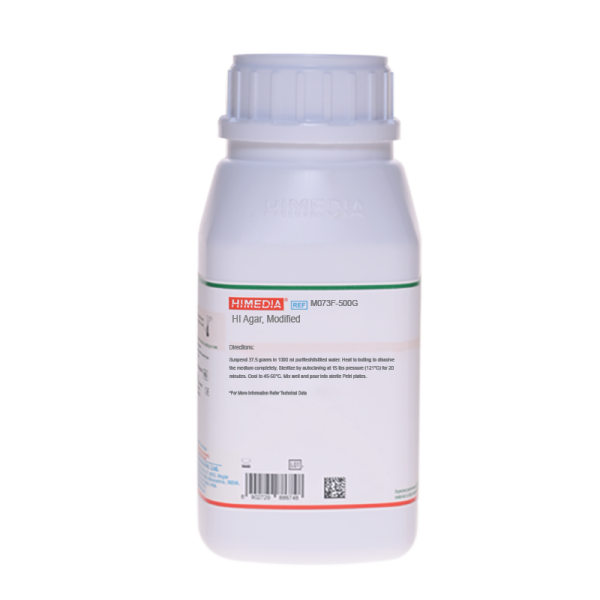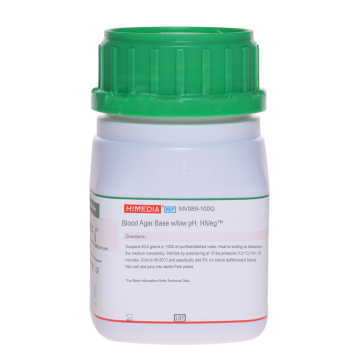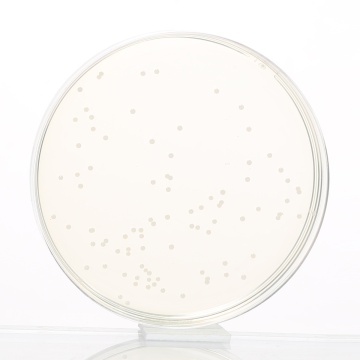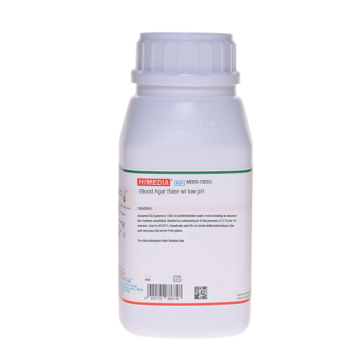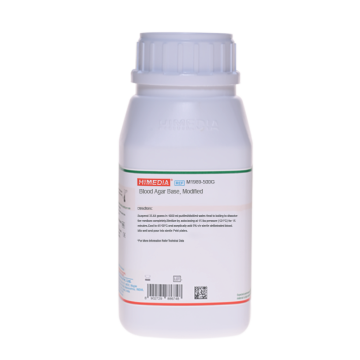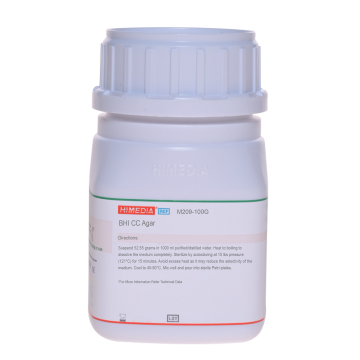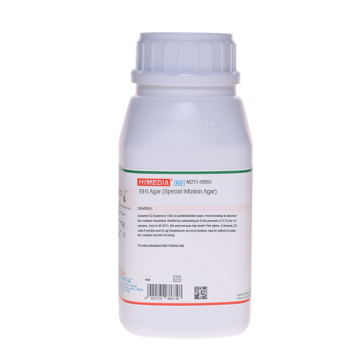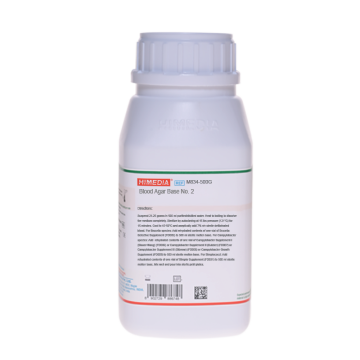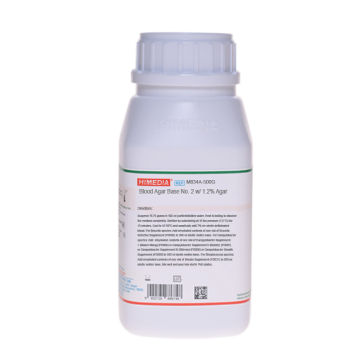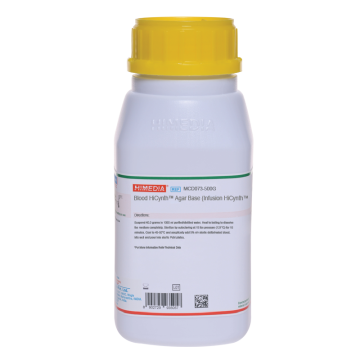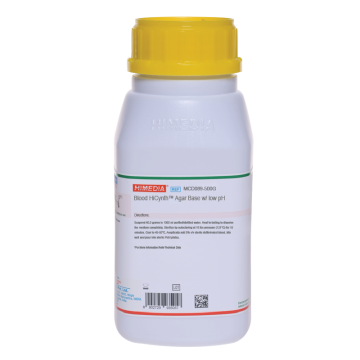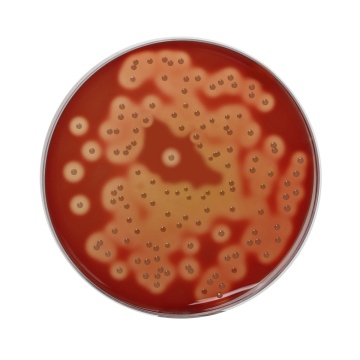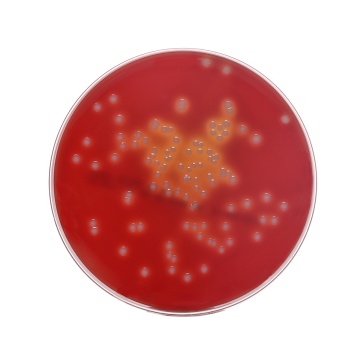 Your enquiry has been submitted
Your enquiry has been submitted
HI Agar, Modified (Heart Infusion Agar, Modified)
Intended Use:
Recommended for isolation and cultivation of fastidious pathogenic microorganisms like Neisseria, Streptococci etc. and for confirmation of diarrheagenic Escherichia coli in accordance with FDA BAM, 1998.
Composition**
| Ingredients | Gms / Litre |
|---|---|
| HMH infusion from # | 375.000 |
| Soya peptone | 10.000 |
| Sodium Chloride | 5.000 |
| Agar | 15.000 |
| Final pH (at 25°C) | 7.3±0.2 |
**Formula adjusted, standardized to suit performance parameters
# Equivalent to Heart muscle, infusion from
Directions
Suspend 37.5 grams in 1000 ml purified / distilled water. Heat to boiling to dissolve the medium completely. Sterilize by autoclaving at 15 lbs pressure (121°C) for 20 minutes. Cool to 45-50°C. Mix well and pour into sterile Petri plates.
Principle And Interpretation
A liquid medium containing an infusion of meat was one of the first media used for the cultivation of bacteria. These infusion media need not be further supplemented by the addition of supplements incase of fastidious bacteria(2). Heart Infusion Agar, Modified is used in the isolation and cultivation of diarrheagenic Escherichia coli in accordance with FDA BAM, 1998 (1). E.coli is a Gram negative, facultatively anaerobic bacterium that is found as commensals in human intestine.
This medium is cited in BAM for primary screening in the conventional biochemical screening and identification of diarrheagenic Escherichia coli. Enrichment of the sample on BHI and TP broths is recommended as the first step in primary screening of diarrheagenic E.coli. This may induce the growth and proliferation of other members of Enterobacteriaceae including non lactose fermenting strains of E.coli. Hence additional tests may need to be performed for isolation. Transfer suspicious colonies to TSI agar, Heart Infusion Agar, Modified slants (M073F), Tryptone Broth, Arabinose Broth, and Urea Broth and incubate for 20 hr at 35°C. Organisms isolated on primary screening are processed for secondary screening and confirmed using genotypic, biochemical and serological reactions. On supplementation of blood, Heart Infusion Agar, Modified can be used to study haemolytic reactions (5). HMH infusion and soya peptone provide nutritional requirements for the pathogenic bacteria. Sodium chloride maintains the osmotic equilibrium of the medium.
Type of specimen
Food samples
Specimen Collection and Handling
For food samples, follow appropriate techniques for sample collection and processing as per guidelines (5).
After use, contaminated materials must be sterilized by autoclaving before discarding.
Warning and Precautions :
Read the label before opening the container. Wear protective gloves/protective clothing/eye protection/ face protection. Follow good microbiological lab practices while handling specimens and culture. Standard precautions as per established guidelines should be followed while handling specimens. Safety guidelines may be referred in individual safety data sheets.
Limitations :
- Due to nutritional variations certain strains may show poor growth.
Performance and Evaluation
Performance of the medium is expected when used as per the direction on the label within the expiry period when stored at recommended temperature.
Quality Control
Appearance: Cream to yellow homogeneous free flowing powder
Gelling: Firm, comparable with 1.5% Agar gel
Colour and Clarity of prepared medium: Basal medium: Light amber coloured clear to slightly opalescent gel. After addition of 5% v/v sterile defibrinated blood : Cherry red coloured opaque gel forms in Petri plates.
Reaction: Reaction of 4.0% w/v aqueous solution at 25°C. pH: 7.3±0.2
pH: 7.10-7.50
Cultural Response
Cultural characteristics observed with added 5% w/v sterile defibrinated blood, after an incubation at 35-37°C for 18-48 hours.
| Organism | Inoculum (CFU) | Growth w/o blood | Recovery w/o blood | Growth with blood | Recovery with blood | Haemolysis |
|---|---|---|---|---|---|---|
| Neisseria meningitidis ATCC 13090 | 50-100 | fair | 40-50% | luxuriant | >=70% | none |
| Staphylococcus aureus subsp. aureus ATCC 25923 (00034*) | 50-100 | good | 50-70% | luxuriant | >=70% | beta |
| Staphylococcus epidermidis ATCC 12228 (00036*) | 50-100 | good | 50-70% | luxuriant | >=70% | none |
| Streptococcus pneumoniae ATCC 6303 | 50-100 | fair-good | 40-50% | luxuriant | >=70% | alpha |
| Streptococcus pyogenes ATCC 19615 | 50-100 | fair-good | 40-50% | luxuriant | >=70% | beta |
Key: *Corresponding WDCM numbers.
Storage and Shelf Life
Store between 10-30°C in a tightly closed container and the prepared medium at 2-8°C. Use before expiry date on the label. On opening, product should be properly stored dry, after tightly capping the bottle in order to prevent lump formation due to the hygroscopic nature of the product. Improper storage of the product may lead to lump formation. Store in dry ventilated area protected from extremes of temperature and sources of ignition. Seal the container tightly after use. Product performance is best if used within stated expiry period.
Disposal
User must ensure safe disposal by autoclaving and/or incineration of used or unusable preparations of this product. Follow established laboratory procedures in disposing of infectious materials and material that comes into contact with sample must be decontaminated and disposed of in accordance with current laboratory techniques (3,4).
Reference
- FDA, U.S. 1998. Bacteriological Analytical Manual. 8 ed. Gaithersburg, MD: AOAC International.
- Hansen, N. H. 1962. J. Appl. Bacteriol., 25.
- Isenberg, H.D. Clinical Microbiology Procedures Handbook 2nd Edition.
- Jorgensen, J.H., Pfaller, M.A., Carroll, K.C., Funke, G., Landry, M.L., Richter, S.S and Warnock., D.W. (2015) Manual of Clinical Microbiology, 11th Edition. Vol. 1.
- Salfinger Y., and Tortorello M.L., 2015, Compendium of Methods for the Microbiological Examination of Foods, 5th Ed., American Public Health Association, Washington, D.C.
| Product Name | HI Agar, Modified (Heart Infusion Agar, Modified) |
|---|---|
| SKU | M073F |
| Product Type | Regular |
| Physical Form | Powder |
| Origin | Animal |
| Packaging type | HDPE |
| References | 1. Noble W. C., 1962, J. Clin, Pathol., 15:552. 2.Hansen N. H., 1962, J. Appl. Bacteriol., 25:46. 3.Hayes P. R., 1963, J. Gen. Microbiol., 30:1. 4.Schuber J. H., Edwards P. R. and Ramsere C. H., 1959, J. Bacteriol., 77:648. 5.Salfinger Y., and Tortorello M.L. Fifth (Ed.), 2015, Compendium of Methods for the Microbiological Examination ofFoods, 5th Ed., American Public Health Association, Washington, D.C. 6.U.S. Food and Drug Administration, 1995, Bacteriological Analytical Manual, 8th Ed., AOAC International, Gaithersburg,Md. 7.Atlas R. M., 1993, Handbook of Microbiology of Microbiological Media, CRC Press, Boca Raton, Fla. 8.Snavely J. G. and Brahier J., 1960, Am. J. Clin. Pathol., 33:5 |
| Customized Product Available | No |



